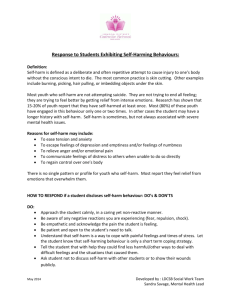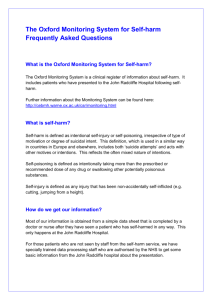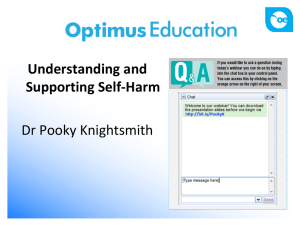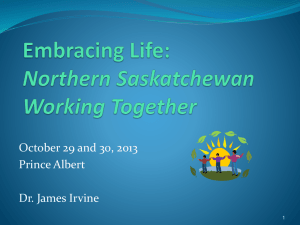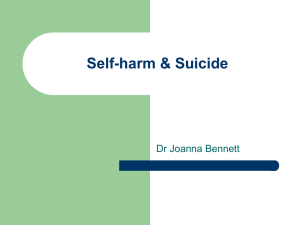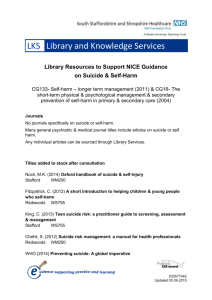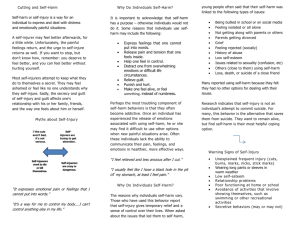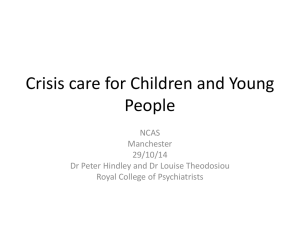Risk Level/Observation Guidelines
advertisement
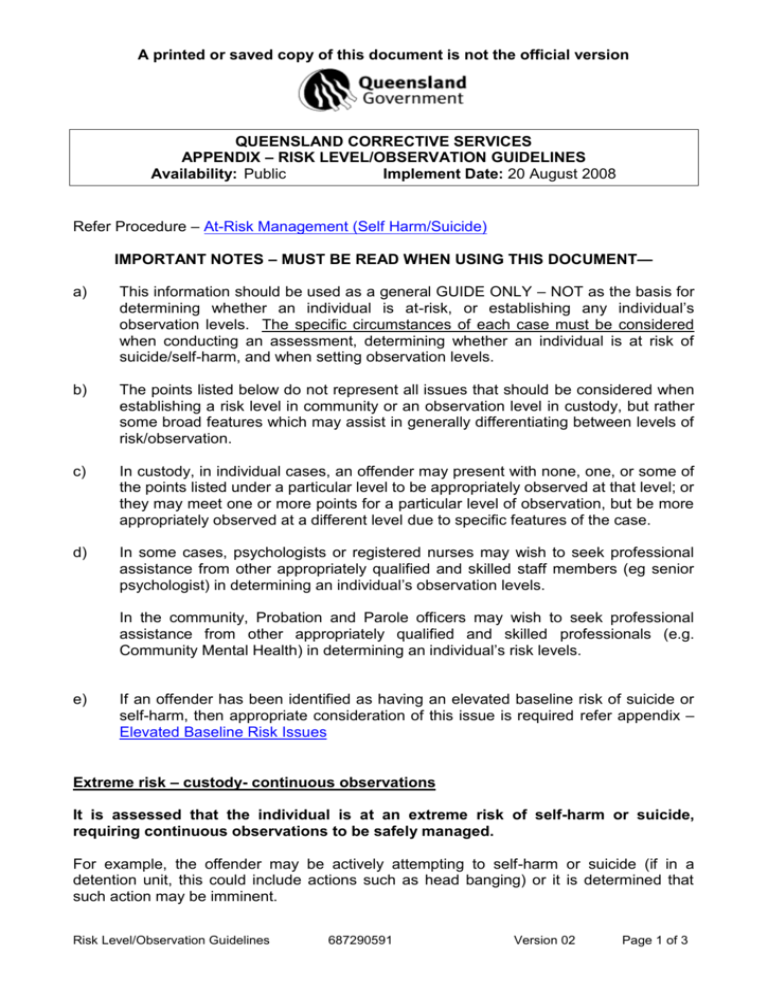
A printed or saved copy of this document is not the official version QUEENSLAND CORRECTIVE SERVICES APPENDIX – RISK LEVEL/OBSERVATION GUIDELINES Availability: Public Implement Date: 20 August 2008 Refer Procedure – At-Risk Management (Self Harm/Suicide) IMPORTANT NOTES – MUST BE READ WHEN USING THIS DOCUMENT— a) This information should be used as a general GUIDE ONLY – NOT as the basis for determining whether an individual is at-risk, or establishing any individual’s observation levels. The specific circumstances of each case must be considered when conducting an assessment, determining whether an individual is at risk of suicide/self-harm, and when setting observation levels. b) The points listed below do not represent all issues that should be considered when establishing a risk level in community or an observation level in custody, but rather some broad features which may assist in generally differentiating between levels of risk/observation. c) In custody, in individual cases, an offender may present with none, one, or some of the points listed under a particular level to be appropriately observed at that level; or they may meet one or more points for a particular level of observation, but be more appropriately observed at a different level due to specific features of the case. d) In some cases, psychologists or registered nurses may wish to seek professional assistance from other appropriately qualified and skilled staff members (eg senior psychologist) in determining an individual’s observation levels. In the community, Probation and Parole officers may wish to seek professional assistance from other appropriately qualified and skilled professionals (e.g. Community Mental Health) in determining an individual’s risk levels. e) If an offender has been identified as having an elevated baseline risk of suicide or self-harm, then appropriate consideration of this issue is required refer appendix – Elevated Baseline Risk Issues Extreme risk – custody- continuous observations It is assessed that the individual is at an extreme risk of self-harm or suicide, requiring continuous observations to be safely managed. For example, the offender may be actively attempting to self-harm or suicide (if in a detention unit, this could include actions such as head banging) or it is determined that such action may be imminent. Risk Level/Observation Guidelines 687290591 Version 02 Page 1 of 3 A printed or saved copy of this document is not the official version High risk – custody- 15 and 30 minute observations It is assessed that the individual is at a high risk of self-harm or suicide, requiring very frequent observations to be safely managed. For example, the offender may present with one or more of the following indicators (or other issues not listed below)— a) b) c) d) e) f) g) h) expressing intent to self-harm or suicide, or considering engaging in this behaviour, or unable to provide clear assurances of intentions not to do so (or professional judgement that assurances are not realistic); engaging in behaviours associated with risk (eg giving away possessions, writing a suicide letter); reporting the existence of a self-harm or suicide plan; reporting self-harm or suicidal ideation above a transient low level; presence of psychotic phenomena with a self-harm or suicidal theme (eg command hallucination instructing to self-harm); mental illness issues that are assessed as being of at-risk concern (eg deterioration during course of chronic mental illness); lack of co-operation with the assessment process/not enough information available to assess whether the individual can be safely managed on a lower level of observations; or limited future orientation (ie unable to outline reasonable goals and plans for the future) and/or hopelessness/helplessness; High risk – community It is assessed that the individual is at imminent/high risk of self-harm or suicide, requiring immediate intervention/assistance from external services to be safely managed. For example, the individual is engaging in self harm/suicidal behaviour or may present with any of the above indicators, not balanced by protective factors. Medium risk – custody- 60 minute observations It is assessed that the individual’s risk of suicide or self-harm is not at a level where they would require continuous or very frequent observations to be safely managed. The individual could present with one or more of the above indicators (or other issues), however to a lesser degree, and these are sufficiently balanced by protective factors (ie the individual’s internal and/or external resources) that significantly moderate the individual’s level of risk. For example, the individual may have been previously placed on a high level of observations, but has been assessed to be considerably improved in key risk areas to the point that their risk level has now decreased to medium. Risk Level/Observation Guidelines 687290591 Version 02 Page 2 of 3 A printed or saved copy of this document is not the official version Medium risk – community It is assessed that the individual’s risk of suicide or self-harm is not at a level where they require immediate intervention/assistance from external services, but require additional support and strategies to ensure their safe management. For example, an individual presents with indicators of depression and there is some evidence of recent suicidal ideation, however they are willing to have the supervising officer contact their next of kin and is willing to attend a scheduled appointment with a treating professional. Additionally, the individual is willing to increase their level of contact with the supervising officer for the period they are deemed to be ‘at-risk’. Low risk – custody- 120 minute observations It is assessed that the individual’s level of risk of self-harm or suicide is low enough that they do not warrant more frequent observations to be safely managed. Any at-risk concerns are of a low level and are sufficiently balanced by protective factors. For example, an offender may present with recent transient low level suicidal or self-harm ideation, but actively denies any current ideation, intent or plan, is future orientated, and presents with significant protective factors. This level may also be used where an offender is assessed as being not at-risk during the Initial Assessment, but they are procedurally required to be observed using the least intrusive measure until they are removed from observation (or a new level is set) by the Risk Assessment Team. Refer procedure – At-Risk Management (Self Harm/Suicide) Low risk – community It is assessed that the individual’s level of risk of self-harm or suicide is low enough that significant intervention is not required to ensure their safe management. For example, an individual presents with recent fleeting suicidal ideation, however denies any current ideation, intent or a plan. They possess short, medium and long term future orientation which is supported by collateral information/sources (e.g. next of kin, family members, treating professional, employer, program facilitators). Risk Level/Observation Guidelines 687290591 Version 02 Page 3 of 3
